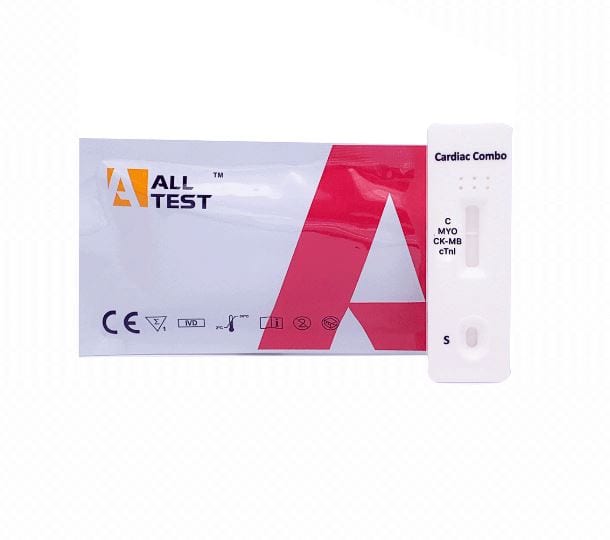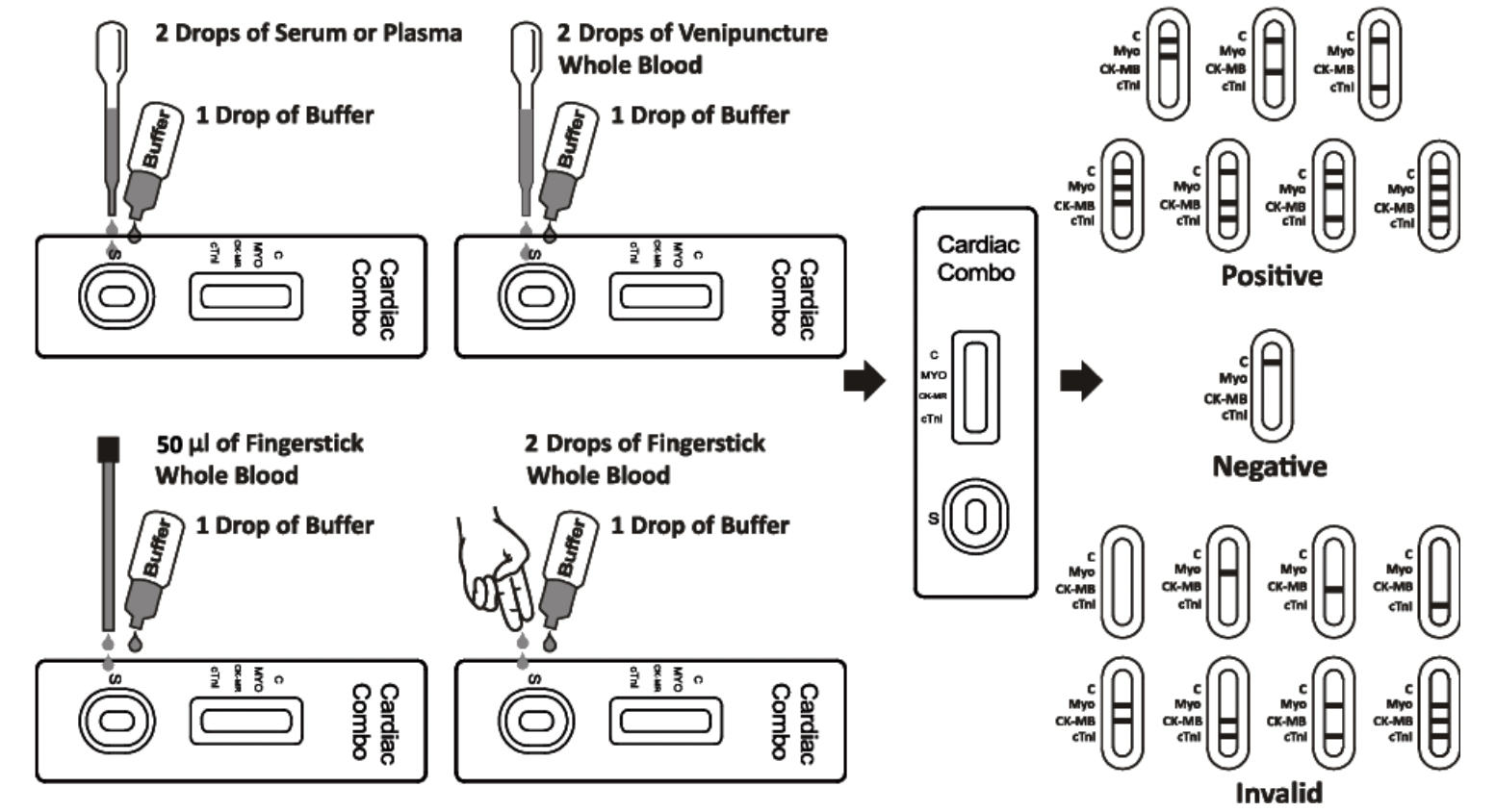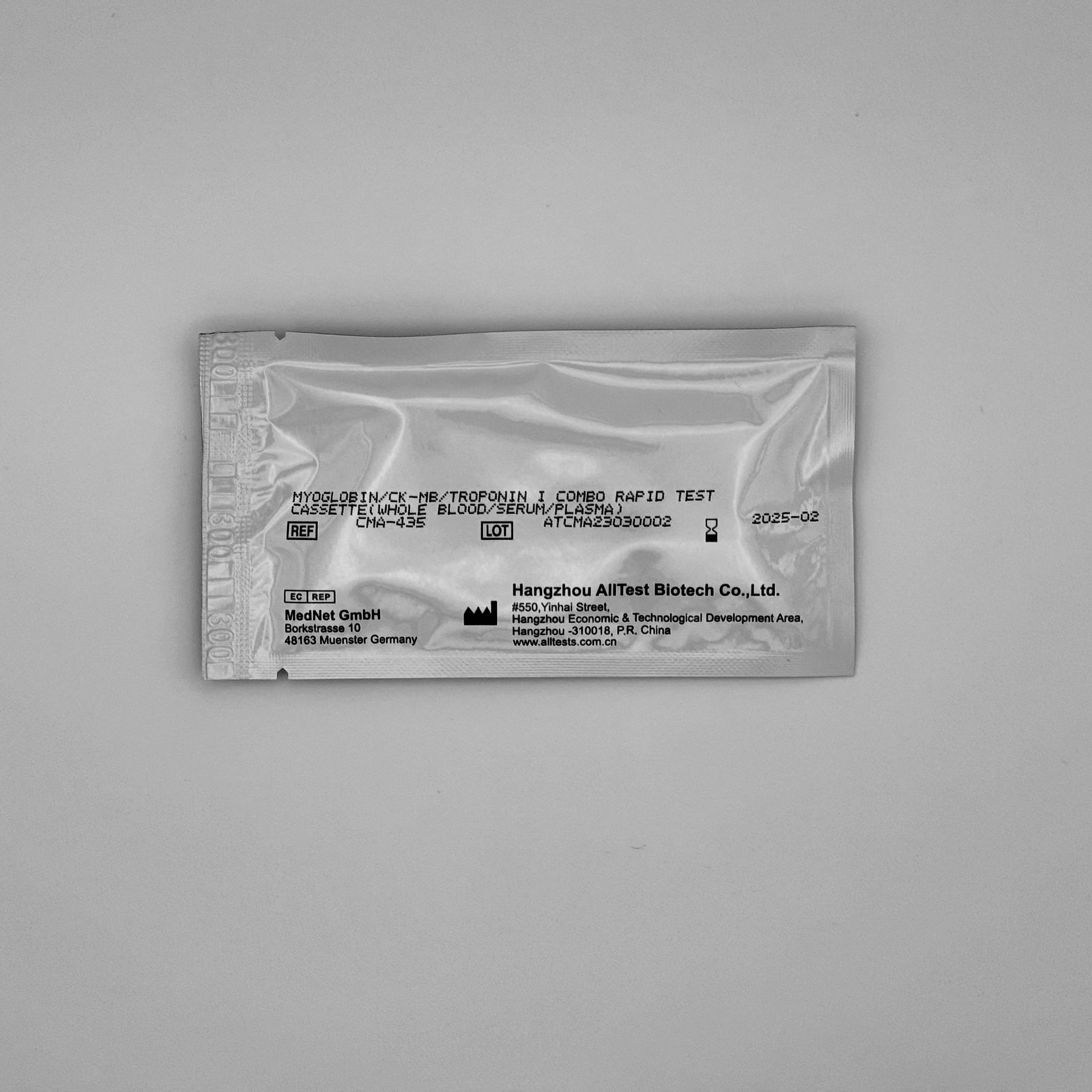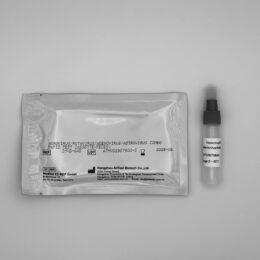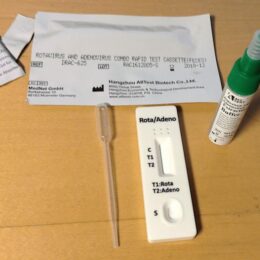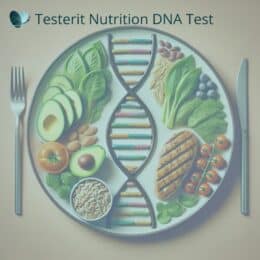Myocardial infarction quick test, 10 pcs
69,00 €
A rapid test to determine myocardial infarction from a fingertip blood sample.
- CE marked for professional use
- The test is equipped with a Finnish user manual
- It is important to follow the instructions and interpret them correctly
- Tests have not been studied in home use
Out of stock
Myocardial infarction can begin unexpectedly without any pre-signs. A typical symptom of myocardial infarction is sudden compressive pain, which lasts more than 20 minutes on the sternum area and can radiate to the upper arms, jaws and even back. In addition, shortness of breath, powerlessness and nausea may occur. Myocardial infarction can also lead directly to ventricular fibrillation of the heart, resulting in heart paralysis and frequent sudden death.
Myocardial infarction releases myoglobin (MYO), creatine quinase (CK-MB) and cardiac-specific troponin I protein (cTNI) into the bloodstream. Elevated levels of myoglobin can be asserted in the bloodstream 2-4 hours after infarction, reach their maximum in 9-12 hours and return to normal levels in 24-36 hours. CK-MB is one of the three isoenzyme forms of creatine kinase and is particularly involved in myocardial metabolism. After myocardial infarction, its concentration in the blood increases by 3-8 hours from symptoms, reaches its maximum in 9-30 hours, and returns to the basic level in 48-72 hours. TNI is part of a complex of three subunits (the others are TNT and TNC) that, together with tropomyosin, regulates the calcium-dependent ATPase activity of actomyosin. Blood TNI levels increase in 4-6 hours from the onset of heart pain, but remain elevated for 6-10 days.
The sensitivity of MYO/CK-MB/TNI rapid testing to myoglobin is 50 ng/ml, for CK-MB 5 ng/ml and for TNI 0,5 ng/ml.
The package has everything you need to do 10 quick tests. Note. the package contains only one buffer solution flask sufficient to perform 10 tests.
MYO/CK-MB/TNI TESTING INSTRUCTIONS FOR FINDING MYOCARDIAL INFARCTION
Allow test cartridges, reagents, controls and samples to balance to room temperature (15-30 °C) before starting the test.
- Take the test cartridge from the sealed foil bag to the table and apply 2 drops (50 μl) of fingertip ≈ blood samples to sample S.
- Immediately add one drop of buffer solution (40 μl) ≈ the sample well from the drip bottle.
- Allow the sample to be absorbed by capillary forces through the cassette’s display window and wait until the background lightens and red zones form. Read the result after 10 minutes (no longer after more than 20 minutes) and interpret it as follows:
- The result is negative for all three, i.e. the concentration does not exceed the baseline if only one is shown in the cassset, i.e. the control line in section C.
- The result is positive for the protein, i.e. the concentration is elevated, where even a weak red-tinted line appears in the marked zone.
- The result is invalid and the test fails whenever the C line is not displayed.
The importance of diet for cardiovascular diseases
Learn more about myocardial infarction and heart attack
The myocardial infarction rapid test is CE marked and intended for use by healthcare professionals. The test is equipped with a Finnish user manual. It is important to follow the instructions and interpret them correctly. Tests have not been studied in home use.
| Weight | 0,3 kg |
|---|---|
| Dimensions | 20 × 15 × 15 cm |

